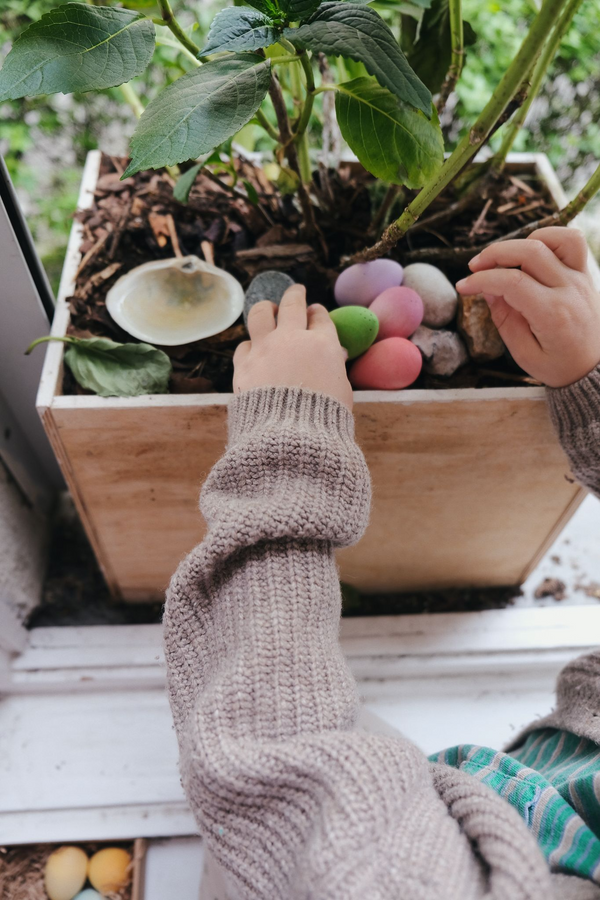
Making a Smooth Move with Toddlers
Erin Burt

If you’ve ever managed a move with children, whether down the road or down a few interstates, you know making a smooth transition starts before and ends well after the move itself. I previously spoke to the finesse of telling your children about an upcoming move. As you approach the whole moving part consider a few pointers from me and others who have—literally—gone before you.
Hit refresh on the conversation. Talk about the move, reload the same details to your preschooler again when he or she asks again. Be firm that the move is happening, not up for discussion—but processing the move is fine. Read about where you are going to. Pictures, google maps, etc. If you’ve been there before talk about some favorite memories. If never been there before, visit if possible. Check out the school and meet the teacher, drive past the home you’ll be living, play at the local park or grab a bite to eat nearby.
Keep on living. If the move is traumatic or just simply nerve-wracking you may find yourself letting little things go. Tread carefully though. Moving does not mean old routines need to fall away in transition. While more meltdowns from your toddler or preschooler make sense, stay generally consistent in your expectations. Be patient and talk through feelings, but don’t promise extra treats or a puppy because you feel the need to compensate. Recognize the difference between giving because you feel bad versus getting something new, like bedding, as an exciting thing to look forward to.
Don’t underestimate younger kids’ needs. Infants and toddlers are used to the familiarity of home, childcare providers, and friends and family. Even places like your church or community of faith, grocery store, or local park provide a sense of security to your child that moving will knock off balance. Take photos, video, or draw pictures of the things you want to remember. Let your child take the lead in pointing out things to make sure you get what’s important to them.
Utilize resources. Act out portions of the move, like telling friends, packing, and saying goodbye to friends. Apps that focus on moving exist, like PBS Kids’ Sesame Street app called The Big Moving Adventure. Some of our favorite books include: Boomer’s Big Day, The Berenstain Bears’ Moving Day, Augustine, I Like Where I Am, Tigger’s Moving Day, Bella and Stella Come Home, A Kiss Goodbye, and many others. Check your favorite bookstore, ask your local librarian, or utilize that library catalog.
Allow them to participate. Let them help and choose along the way when possible. They can help pack, plan aspects of the road trip, and pick what toys to leave behind (or give to a friend). Explain what will happen to their things when they don’t have access to them (like in the moving van).
Seeing is believing. While having someone watch the kiddos for moving day is helpful, it can jar a child to leave the full house in the morning only to arrive back to an empty one that evening. Perhaps they can stop by and see the moving van, help take their boxes to the truck, and then go back away for the afternoon.
Plan for goodbyes. For some people goodbyes on moving day are ideal. For others, they may want to say goodbyes in advance so moving day feels like a fresh start looking forward. You likely have both sorts of people (or some other sort!) in your family. Talk with each family member and, as much as able, make plans for goodbyes. Likely there will be a mix of short goodbyes and longer outings or afternoons.
Set up for staying in touch. Make sure you have proper phone, address, and email for people your children want to keep in touch with. If grandma and auntie do not yet have Skype or FaceTime set up (or don’t know how to use it), get it set up before you leave. Practice using it now to relieve potential stress when you first try to touch base down the road.
Familiarity is your friend. A friend who moved often growing up remembers the box her mother packed last and unpacked first. A few photos, favorite plates, shower curtain, toys, and bedtime books were among every single move she remembered. The continuity was settling. While movingoften means purging the house of junk, be careful with your children’s things. Even if you involve them in the sorting, they may miss some items (even items they never played with!) once settled in your new digs. Loading an extra box or two now may help your child later when the finality of the move really sets in.
Help connect. Set up play dates if you know people in town (and if your child is open and willing). If you have older children, take them to local spots where they can familiarize themselves sooner than later. Join local Facebook groups of the places you move to in order to get the inside track on what is happening and begin making connections with other families. Learn the lay of the land by going on excursions with no definite destination in mind. Revisit social etiquette, role-play meeting new people. If new childcare will be in place, try to let them tour the child care facility in person, via Skype, or get pictures from the new teacher.
Recognize and honor feelings. There is a place for selling the upside(s) to the move. At the same time, your child needs space to feel his or her feelings and the time to process them. Processing the move doesn’t end once you tell them, or even once you relocate. Moving in the summer may not hit home until the school year begins or at the holidays when traditions alter in the new home or with different travel plans. Regression may strike in sleep, potty training, or some other way. Check in with teachers and your kiddo not just the weeks or even month after the move—check in with them for months after. Make note of milestones they may really be bothered by—like their best friend’s birthday “back home.” Accept the feelings, give space to them, and assist in finding ways to cope.
Welcome home.
Lynette is a mom of three children from one year to age five. She has cloth diapered all three since birth and enjoys all things eco-friendly and mindful living.







